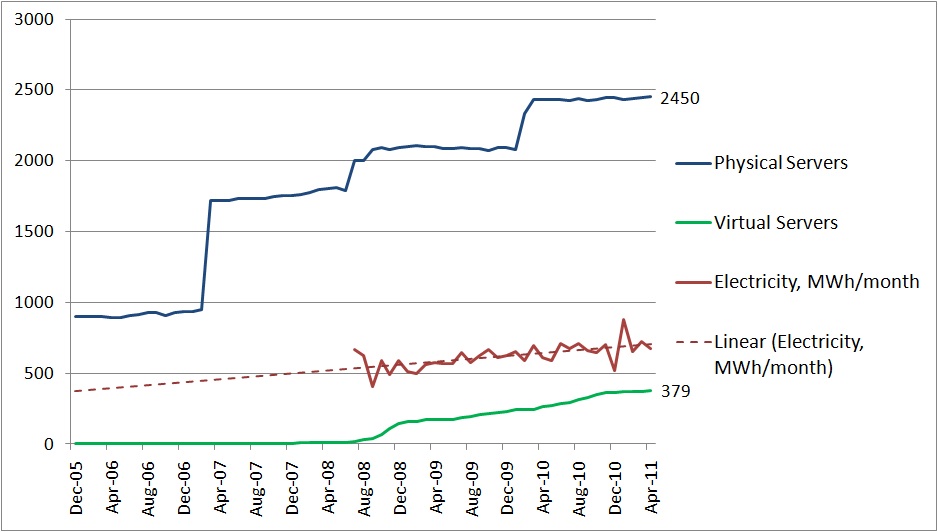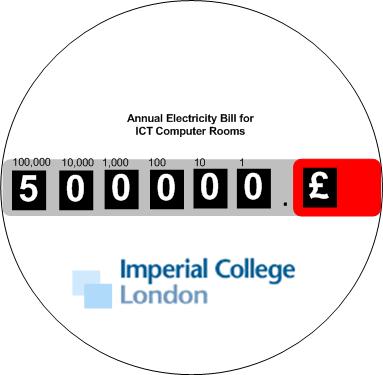The challenge of this particular project is to improve on what is already two reasonably efficient “data centre” computer rooms (with power utilization efficiency, or PUE, of 1.52 and 1.32), and perhaps influencing other “data centres” to adopt any improvements we can establish.
Working within Facilities Management I’m learning a lot about how such facilities function and their potential influencing factors, but one single fact suprises me and it is this:
We have a central “data centre” facility which is well supported, backed-up, environmentally controlled with excellent support staff, and this must be the most efficient, sustainable and cost effective approach to managing large quantities of data storage or processing, yet there is still a myriad of smaller “data farms”, “clusters”, which academic groups maintain, scattered around our College buildings. Such facilities require local focused cooling, additional maintenance and support, surely this doesn’t make sense and is certainly not the most efficient and sustainable solution!


 We see more and more that issues of sustainability appear on Higher Education agendas. And rightly so. Energy consumption is probably one of the largest single expense in Estates and ICT budgets. Recognizing this JISC have started the
We see more and more that issues of sustainability appear on Higher Education agendas. And rightly so. Energy consumption is probably one of the largest single expense in Estates and ICT budgets. Recognizing this JISC have started the